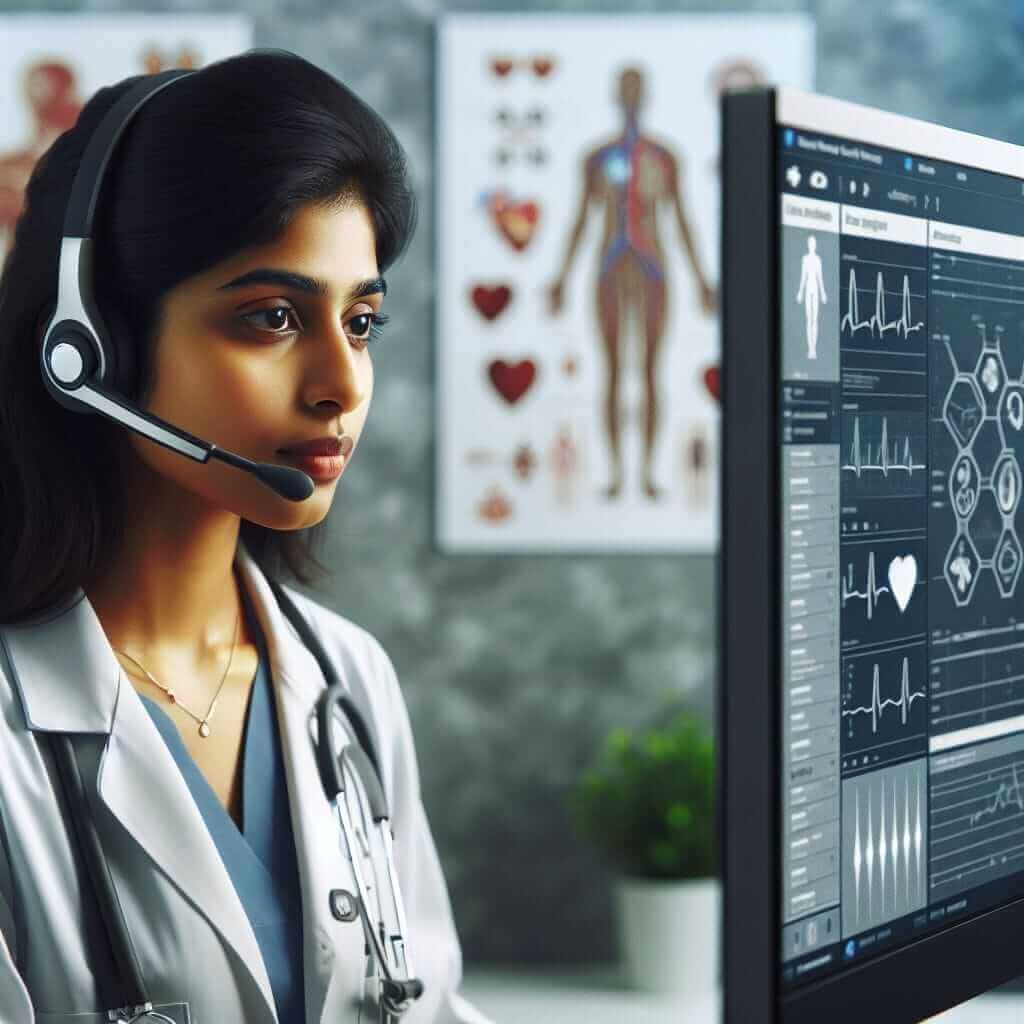The IELTS Reading test can be quite challenging, especially when it comes to dealing with advanced topics like technological advancements in telemedicine. This article is crafted to give you a thorough practice session that mimics the format and difficulty of actual IELTS Reading tests. With growing interest and technological developments in healthcare, the subject of telemedicine has been frequent in past IELTS examinations and is likely to continue being relevant. Understanding this topic not only helps you score well but also keeps you informed about significant global trends.
Technological Advancements in Telemedicine
Passage
Telemedicine: Bridging the Healthcare Gap with Technology
The early 21st century has witnessed a surge in technological advancements, many of which have rapidly revolutionized the field of telemedicine. Telemedicine refers to the practice of using telecommunications technology to provide clinical health care from a distance. This innovation has proven particularly transformative in rural and underserved areas where access to healthcare services is limited.
Advancements in telemedicine are multifaceted, involving developments in digital communication tools, artificial intelligence (AI), wearable technology, and electronic health records (EHRs). High-speed internet and mobile technology have eradicated many barriers previously faced in remote consultations. For instance, real-time video conferencing allows healthcare providers to interact with patients remotely, making distance irrelevant.
Further, AI algorithms have enhanced diagnostic accuracy by analyzing medical data more rapidly and precisely than human practitioners can. Wearable technology such as smartwatches and fitness trackers enable continuous monitoring of patient vitals, alerting both the patient and healthcare provider to any irregularities, thereby facilitating early intervention.

Moreover, EHRs allow for the seamless sharing of patient information across various healthcare systems, ensuring coordinated care while minimizing the potential for medical errors. This interoperability of systems is critical for integrated care models that aim to enhance patient outcomes and operational efficiency.
In particular, telemedicine has shown remarkable potential in managing chronic diseases. Remote patient monitoring systems can track a patient’s condition over time and send alerts when intervention is needed, reducing hospital readmissions and associated healthcare costs.
Despite these advancements, the implementation of telemedicine is not without challenges. Issues concerning data privacy, standardization of technology, and the need for regulatory frameworks are significant barriers that need to be addressed. Nonetheless, as technology continues to evolve, the integration of telemedicine into mainstream healthcare appears inevitable, promising a future where quality healthcare is accessible to all, irrespective of geographical limitations.
Questions
Multiple Choice
-
What has been a major contributing factor to the surge in telemedicine?
- A. Increased funding for rural clinics
- B. Advances in digital communication tools and AI
- C. Reduction in healthcare costs
- D. Legislative changes in healthcare policy
-
How has wearable technology impacted healthcare according to the passage?
- A. By replacing traditional medical devices
- B. By enabling continuous monitoring of patient vitals
- C. By making the healthcare system more expensive
- D. By increasing the workload of healthcare providers
True/False/Not Given
- Real-time video conferencing has made distance irrelevant in healthcare provision.
- AI algorithms have completely replaced human practitioners in diagnostics.
Matching Information
Match the statements (5-7) with the sections (A-C) from the passage:
- Real-time consultations
- Management of chronic diseases
- Challenges in implementing telemedicine
Sections:
- A. High-speed internet and mobile technology
- B. Issues concerning data privacy
- C. Remote patient monitoring systems
Sentence Completion
- Telemedicine is particularly transformative in __ areas where access to healthcare is limited.
- EHRs allow for the seamless __ of patient information across various healthcare systems.
Answers
Multiple Choice:
- B. Advances in digital communication tools and AI
- B. By enabling continuous monitoring of patient vitals
True/False/Not Given:
3. True. Real-time video conferencing has made distance irrelevant in healthcare provision.
4. False. AI algorithms have completely replaced human practitioners in diagnostics.
Matching Information:
5. A. High-speed internet and mobile technology
6. C. Remote patient monitoring systems
7. B. Issues concerning data privacy
Sentence Completion:
8. Telemedicine is particularly transformative in rural areas where access to healthcare is limited.
9. EHRs allow for the seamless sharing of patient information across various healthcare systems.
Common Mistakes to Avoid
- Misinterpreting Question Keywords: Often, keywords in the questions are similar but not exactly the same as those in the text. Focus on understanding the meaning rather than just matching words.
- False Assumptions: Avoid making assumptions based on your prior knowledge. Stick closely to the information provided in the passage.
- Time Management: Ensure you allocate your time wisely, dividing it equally among sections to avoid rushing through the last part.
Vocabulary
- Telecommunication (noun) /ˌtelɪkəmjuːnɪˈkeɪʃən/: Communication over a distance by cable, telegraph, telephone, or broadcasting.
- Interoperability (noun) /ˌɪntərɒpərəˈbɪləti/: The ability of computer systems or software to exchange and make use of information.
- Surge (noun) /sɜːrdʒ/: A sudden powerful forward or upward movement.
Grammar Point
Relative Clauses
Relative clauses add extra information about something without starting a new sentence. They often start with who, which, where, when, or that.
Examples:
- High-speed internet, which has eradicated many barriers, allows healthcare providers to interact with patients remotely.
- The patient, who was in a rural area, could consult a specialist via telemedicine.
Tips for High IELTS Reading Scores
- Practice Regularly: The more you practice, the more comfortable you become with the format and types of questions.
- Improve Your Vocabulary: Familiarize yourself with academic vocabulary relevant to common IELTS topics.
- Read Widely: Include various subjects such as science, history, and social sciences in your reading routine.
- Time Management: During practice, time yourself to ensure you can complete each passage within 20 minutes.
- Answer All Questions: Even if unsure, attempt all questions as there is no penalty for wrong answers.